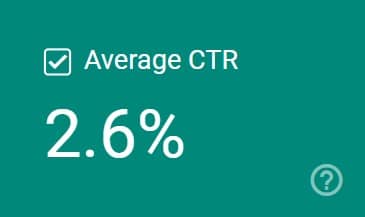Behavioral metrics and SEO performance are closely linked. These metrics provide key insights into how users interact with your site, which in turn directly influences search engine rankings.
This article will examine why these metrics are important and how they can be leveraged to boost SEO performance.
Understanding Behavioral Metrics and SEO
Behavioral metrics encompass a variety of user actions, such as how long visitors stay on your page, their activity, and whether they return. These metrics provide real-time feedback on user engagement and experience.
1. Click-Through Rate (CTR)

The click-through rate is a primary indicator of how well your search snippets match user intent. A high CTR means users find your listing relevant, which can signal to search engines that your content is valuable, potentially improving your rankings.
2. Dwell Time and Engagement Metrics
While dwell time isn’t directly available in GA4, a more insightful metric called “engagement time” takes its place. GA4 goes beyond just time spent on a page (common in Universal Analytics) by tracking user actions like scrolling, clicks, and video engagement. This approach provides a clearer picture of how users interact with your content.
Similarly, the bounce rate has been replaced by the more informative “engagement rate.” This metric focuses on the positive: sessions with at least 10 seconds of interaction, a conversion event, or multiple page views. This shift from sessions to events offers a more dynamic view of user engagement, revealing how effectively your site captures and retains user interest.
3. Pogo Sticking
Unlike bounce rate, pogo sticking occurs when a user quickly jumps back and forth between search results and different pages. This behavior can negatively impact your SEO, signaling dissatisfaction with the found content.
4. Time on Page and Pageviews per Session
Metrics like time spent on a page and pageviews per session provide valuable insights into how deeply users connect with your content. These metrics indicate content relevance and user interest, which are factors that search engines consider.

Google Analytics 4 offers a more nuanced view of engagement with “engagement time” (tracking active behaviors) and “engagement rate” (focusing on sessions with meaningful interaction). Analyzing these metrics lets you gauge how effectively your site captures and retains user attention, ultimately contributing to better SEO performance.
Related: 4 Game-Changing GA4 Analytics Methods for eCommerce SEO Mastery
5. Conversion Rate Optimization (CRO)
Conversion rate optimization isn’t just about turning visitors into customers—it’s about creating a user-friendly experience that compels users to engage deeper with your site. Effective CRO strategies can lead to improved behavioral metrics and better SEO outcomes.
Here are some effective CRO strategies that can lead to improved user engagement, behavioral metrics, and, ultimately, SEO performance:
Streamlined User Journey: Ensure your website has a clear and intuitive navigation structure. Users should be able to find the information they need quickly and easily.
Compelling CTAs (Calls to Action): Use clear, concise, and action-oriented CTAs that tell users exactly what you want them to do next. A/B test different CTA variations to see which ones resonate best with your audience.
Reduced Friction: Minimize any obstacles that might prevent users from completing a desired action. This could include simplifying forms, offering multiple payment options, and ensuring a smooth checkout process.
Trustworthy Credibility: Build trust with potential customers by showcasing positive testimonials, displaying trust badges, and providing clear contact information.
Strengthen Your Website: User Engagement and SEO
Content: Quality and Relevance are Key
High-quality content is the foundation of strong on-page SEO. Focus on creating informative and engaging content that directly addresses your target audience’s search queries. This improves dwell time and engagement while establishing your website as a valuable resource, potentially leading to repeat visits and conversions.
Targeted Keywords: Search Engine Language
It is crucial to strategically use relevant keywords throughout your website. This includes titles, meta descriptions, headers, and body content. Keywords help search engines understand your content’s relevance and increase the likelihood of your website appearing in search results for those keywords. Optimized titles and descriptions can also entice users to click through from search engine pages (improving click-through rate or CTR).
Related: The Ultimate Guide to Long-Tail Keywords for eCommerce Success
Technical SEO: The Foundation for User Experience
The technical aspects of your website are important. Ensure your website has a fast loading speed, a mobile-friendly design, and a clear internal linking structure. These factors contribute to a positive user experience, which can indirectly improve engagement metrics.
Mobile-First: Prioritize the Dominant User Base
Mobile-friendliness is no longer optional for SEO. With most internet traffic now coming from mobile devices, optimizing your site for mobile is essential. Consider a mobile-first development approach, prioritizing the mobile user experience to cater to the majority of your audience. This can significantly enhance user engagement, reduce bounce rates, and improve SEO performance.
Internal Linking: Structure for User Engagement and Search Engines
Effective internal linking is a powerful tool for keeping visitors on your site longer and encouraging them to explore more content. By strategically linking to relevant pages within your site, you achieve two key benefits:
Improved Search Engine Ranking: Links act as votes of importance for web pages. By linking to relevant internal pages, you distribute this “authority” throughout your site, potentially improving the ranking of those linked pages.
Enhanced Crawlability: Strategic internal linking helps search engines discover and understand the structure of your website, leading to more comprehensive indexing and potentially better rankings.
A well-structured internal linking system also improves user experience by providing them with more useful information and clear navigation paths, leading to increased page views per session and longer time on site.
By implementing these website optimization strategies, you can create a user-friendly and informative website that not only ranks higher in search results but also fosters deeper user engagement, ultimately leading to a more successful website.
Conclusion
Attention to behavioral metrics is essential for anyone aiming to enhance their SEO performance. Understanding and improving these metrics can ensure (a better user experience, leading to higher search engine rankings and more) successful conversions.
If you want to refine your website’s SEO strategy, consider partnering with LuccaAM. We specialize in aligning SEO practices with your business goals for maximum impact.
FAQs
What is the most important behavioral metric for SEO?
Click-through rate (CTR) is often considered one of the most crucial metrics, as it directly reflects how appealing your search snippets are to potential visitors.
How can I improve my site’s dwell time?
Enhance the quality of your content, make it engaging, and ensure it’s highly relevant to the queries you are targeting.
What does a high bounce rate indicate?
A high bounce rate usually indicates that the site entry pages aren’t relevant to visitors or that the user experience is lacking.
How does mobile-friendliness affect SEO?
Mobile-friendliness improves user experience on mobile devices, leading to better engagement metrics and boosting SEO performance.
- SEO Health Check: Ensuring Your Website’s Optimal Performance - July 16, 2024
- SEO for WordPress Websites: The Essentials - June 28, 2024
- SEO for New Websites: A Quick Start Guide - June 19, 2024
